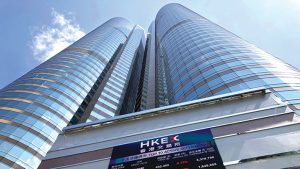The latest tumble in Hong Kong stocks puts at risk of losses the around $15 billion of complicated structured products linked to that market that have mostly been sold to retail investors in South Korea.
As of September, $14.8 billion of equities-linked securities products, or ELS, tied to Hang Seng China Enterprises Index had yet to mature, according to the Korea Securities Depository. Those products deliver bond-like coupons if equities or indexes maintain certain levels, but if they drop sharply, investors risk losing much or all of their principal.
The most-sold ELS products linked with the key Hang Seng stock gauge were those with so-called knock-in levels of 50%, meaning that investors could face losses on their principal if there is a 50% or more decline from a specific index reference points. Even before October 21 plunge, about 2.8 trillion won of HSCEI-related ELS products were estimated to have already hit knock-in levels, Baek Doosan, an analyst at Korea Investment & Securities said.
The Hang Seng China Enterprises Index sank 7.3% on October 21 and it’s fallen about 37% this year, making it the world’s second-worst performing major benchmark in 2022. Bank of America Corp. estimates the slump could have breached up to $3 billion notional worth of HSCEI-linked product knock-ins, “resulting in substantial retail losses and ‘forced’ selling†of HSCEI stocks and index futures worth over $2 billion, although the broker expects a smaller impact going forward.
Further selloffs could saddle Korean brokers with losses as the cost of hedging their risks rise, although analysts say those firms are better prepared to avoid facing margin calls than they were in March 2020. At that time, margin calls on brokers’ dollar-denominated derivatives positions prompted a rush for the US currency that dragged down the won.
The risks arising from Hong Kong share tumble are the latest example of how highly complicated structured products have been sold to Korean retail investors seeking better returns when interest rates are low, which leave them with possibility of losses when markets weaken.
—Bloomberg
 The Gulf Time Newspaper One of the finest business newspapers in the UAE brought to you by our professional writers and editors.
The Gulf Time Newspaper One of the finest business newspapers in the UAE brought to you by our professional writers and editors.
